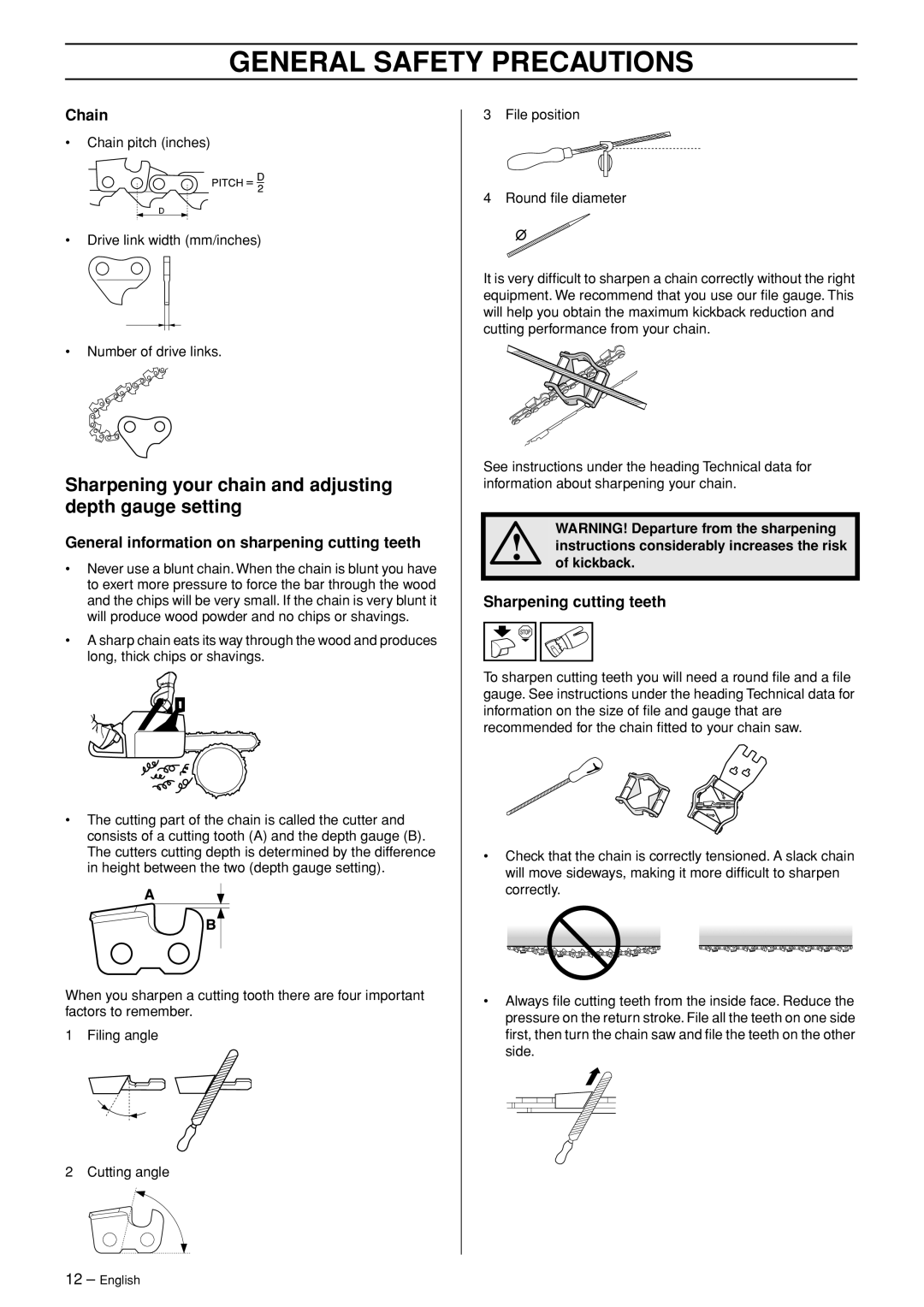
GENERAL SAFETY PRECAUTIONS
Chain
•Chain pitch (inches)
•Drive link width (mm/inches)
•Number of drive links.
Sharpening your chain and adjusting depth gauge setting
General information on sharpening cutting teeth
•Never use a blunt chain. When the chain is blunt you have to exert more pressure to force the bar through the wood and the chips will be very small. If the chain is very blunt it will produce wood powder and no chips or shavings.
•A sharp chain eats its way through the wood and produces long, thick chips or shavings.
•The cutting part of the chain is called the cutter and consists of a cutting tooth (A) and the depth gauge (B). The cutters cutting depth is determined by the difference in height between the two (depth gauge setting).
When you sharpen a cutting tooth there are four important factors to remember.
1 Filing angle
2 Cutting angle
3File position
4Round file diameter
It is very difficult to sharpen a chain correctly without the right equipment. We recommend that you use our file gauge. This will help you obtain the maximum kickback reduction and cutting performance from your chain.
See instructions under the heading Technical data for information about sharpening your chain.
WARNING! Departure from the sharpening
!instructions considerably increases the risk of kickback.
Sharpening cutting teeth
To sharpen cutting teeth you will need a round file and a file gauge. See instructions under the heading Technical data for information on the size of file and gauge that are recommended for the chain fitted to your chain saw.
•Check that the chain is correctly tensioned. A slack chain will move sideways, making it more difficult to sharpen correctly.
•Always file cutting teeth from the inside face. Reduce the pressure on the return stroke. File all the teeth on one side first, then turn the chain saw and file the teeth on the other side.
12 – English
